Editor’s Note: For many, the Panama Canal is a bucket list item. This is what it’s like, in three main steps: staging in Colón, the actual Canal transit, and regrouping in Panama City. Panama is so much more than just the Canal. -rc
Panama: Colón
December 13-15, 2024
On our way to Colón, Panama, the sea had a jerky, abrupt way of moving and flowing. Due to the local winds, the tops of the waves formed white caps. Beautiful to see and soothing to feel.
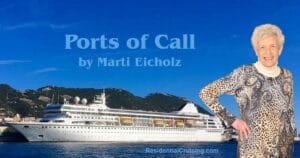 The Odyssey arrived in Colón, a small Caribbean province in Panama, rich in history and incomparable scenery.
The Odyssey arrived in Colón, a small Caribbean province in Panama, rich in history and incomparable scenery.
Panama is one of the fastest-growing destinations in Central America. The star attraction of course is the Panama Canal, an artificial 51-mile waterway across Panama, connecting the Atlantic Ocean with the Pacific Ocean. The Canal, in all its splendor and majesty, cuts across the Isthmus of Panama in a narrow land bridge between North and South America, and is a major conduit for maritime trade.
One of the highlights of visiting the Colón province is the Caribbean towns, like Portobelo and La Guaira. You will savor the vibrant, boisterous Caribbean flair, the rich food culture, the traditional Calypso music, and the traditional Congo dances.
Portobelo is one of the most important municipalities in the region of Colón because of the history and historical legacy of its ruins. During colonial times it was a rich city with a lot of commercial activity, but after several raids by pirates it was emaciated.
Colón is home to beautiful islands, like Isla Grande and Isla Mamey, with crystal-clear waters perfect for diving, snorkeling, paddling, and kayaking. For lounge-friendly activities, take a boat tour or simply soak in the sun on one of the white sandy beaches. The beaches are not the only places with breathtaking aquatic wonders. Hike through the mysterious forests of Portobelo National Park and chase waterfalls.
Take a step back in time and learn about the province’s history in San Lorenzo and Portobelo’s forts, historic homes, and museums. These fortifications are “magnificent examples of 17th and 18th-century military architecture.” Enough of the forts remain to allow you to visually imagine life during those times. Black-hearted pirates, staunch military personnel, and the metallic ring of clashing swords with breathtaking views to the turquoise waters of the Caribbean entrance to the Panama Canal.
Colón is one of the most interesting provinces to visit in Panama for its history and nature. On its Caribbean coasts there were ports that traded with Spain during the colonial era. The relics of the time are still preserved. The nature surrounding Colón stands out: its extensive jungles full of monkeys and birds, its paradisiacal beaches and islands in the middle of the ocean.
The Panama Canal, a spectacular engineering feat, allows ships to cross between the Atlantic and the Pacific across the continent. The Agua Clara visitor center is where you can visit the museum that tells the history of the canal and other curiosities, as well as take in a panoramic view of the canal.
The chapel of the Church of the Black Christ, built in 1814 and renovated over the years, houses a life-size figure of the Black Christ.
Soberania National Park is located on the banks of the Panama Canal and is the perfect place for hiking in its lush jungle that crosses the Chagres River. The park is famous for the great variety of birds. There are numerous hiking trails for all levels, and natural pools where you can take a dip.
To move between the two largest cities in the country, Panama City and Colón, the Panamanian Railway, despite its age, remains a favorite. This luxury train dates to 1855 and crosses the country through lush jungles.
Colón 2000 is a shopping complex famous for duty free products. It is a safe complex within the city where you can shop for luxury goods cheaper than usual, and buy souvenirs and local handicrafts.
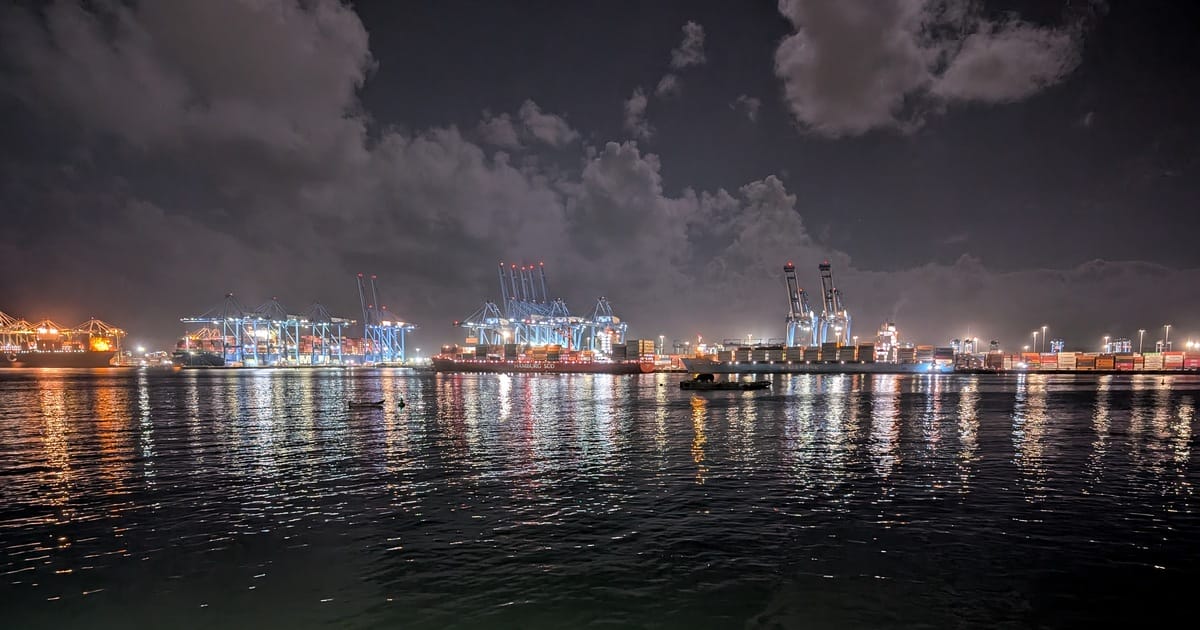
Panama: The Canal
December 16, 2024
It is two o’clock in the afternoon and The Odyssey is leaving Colón, preparing for our transit through the Canal.
The Panama Canal, considered one of the seven wonders of the modern world, was completed in 1914, with the Gatun Locks on one end and the Miraflores Locks on the other, creates a far shorter, significantly more efficient water route from the Caribbean Sea in the Atlantic to the Pacific Ocean.
Dubbed by author David McCullough as the “moonshot of its era,” the canal, located at the narrowest point of the Western Hemisphere landmass, the Isthmus of Panama, effectively reduced ship travel time from the Atlantic to the Pacific by about 5 months, and travel distance by some 8,000 miles. Ships could now avoid the treacherous Southern Ocean at Cape Horn.
The canal was a boon to the world economy and international trade. Today, 15,000 ships pass through the Isthmus of Panama via the Canal annually.
Every ship that passes through the canal pays a toll based on its size, and type and volume of cargo. Cruise ships pay by number of passengers in beds. The Panama Canal’s impact continues to be immeasurable.
We patiently await the inspection of our ship, getting in the queue, waiting our turn….
A transit through the canal typically takes around 8-10 hrs. Hours may vary because the speed, determined by the canal authorities and pilots.
In the early morning a pilot will board our ship to get the ship through the canal. A speaker, well versed on the history and sights of the Canal, will board to give scenic commentary as we make the transit.
The Canal bisects the Isthmus of Panama some 620 miles north of the equator. While many think the geographical positioning of the canal is from the east to the west or vice-versa, the Panama Canal in fact runs north to south, from the Caribbean Sea to the Pacific Ocean.
It’s one of the largest and most difficult, ground-breaking engineering projects ever undertaken, and there’s still nothing else like it. Bold, really bold!
The Panama Canal works by moving ships from one ocean to another through inland waterways. But because those waterways lead down to sea level, six lock chambers (three on the Pacific side and three on the Atlantic side) each work as elevators. Gatun Lake holds the massive amounts of water needed to operate this system that raises and lowers ships from sea level up to the level of this reservoir and then back down again.
The Panama Canal consists of several locks, lakes and canals that our ship needed to pass through, through several stages:
1. Entering the Panama Canal at Christobal and leaving the Caribbean Sea. This is where we picked up the local pilot and narrator.
An industrial scene is the first impression one gets when stepping out on deck, the cement walls of Gatun Locks rising high above the superstructure of the ship. This is a world of steel beams and high light standards, rivets and cement. Vehicles known as “mules” are positioned on tracks on each of the locks, ready and waiting to guide our ship through. Though they are a type of locomotive, the mules don’t pull the ships through the locks: the ships’ engines still do that work. The mules keep the ships centered, and ensure the ships don’t hit the locks’ doors.
Much of the infrastructure is original. Looking from the front or back of our ship, the original steel doors on both ends of each lock looked old or hand-crafted, but they’re engineering marvels. Though each steel door weighs up to 662 tons, their semi-hollow construction means they can be operated reliably by two 25-horsepower motors.
2. Passing through the three Gatun locks. The ship was elevated 85 feet above sea level to reach the level of Gatun Lake. The process is so slow and smooth that it feels like nothing at all is happening, but as you watch the walls of the lock, you can measure the ship’s steady progress.
3. Sailing across Gatun Lake, which is a large freshwater lake through the Panamanian rain forest, keeping our eyes open for pelicans and crocodiles.
4. Gamboa was the halfway point and headquarters of the Panama Canal dredging division.
5. Sailing through the famous Culebra Cut (Gaillard Cut), an artificial valley running through the Continental Divide. This is where we passed gold hill and sailed under the Centennial Bridge.
6. Entering the Pedro Miguel Lock, where we’re lowered 31 feet. The two Miraflores Locks did the rest of the work, moving our ship 54 additional feet back down to sea level. The sensation of traveling smoothly up and down through each lock as more than 100,000 cubic meters of water moves slowly in and out is almost meditative. This is a real-world physics lesson. You don’t have to be a scientist to appreciate it.
7. Sailing under the Bridge of the Americas and viewing the beautiful skyline of Panama City.
8. Exiting the canal at Balboa to the Pacific Ocean.
The full Panama Canal crossing from the Atlantic to the Pacific took around 11 hours. Much of that time was spent peacefully navigating flat waterways like Gatun Lake and the Culebra Cut (Gaillard Cut).
Engineers building the Canal faced brutal conditions: rampant yellow fever and malaria, massive landslides, flooding, sweltering heat, and equipment too light for the job. Construction cost over 25,000 lives.
Now the motto of the Panama Canal is “For the Benefit of the World”.
This crossing was a profound and poignant experience and worthy of your bucket list of places to visit.
The Odyssey will dock in Panama City.
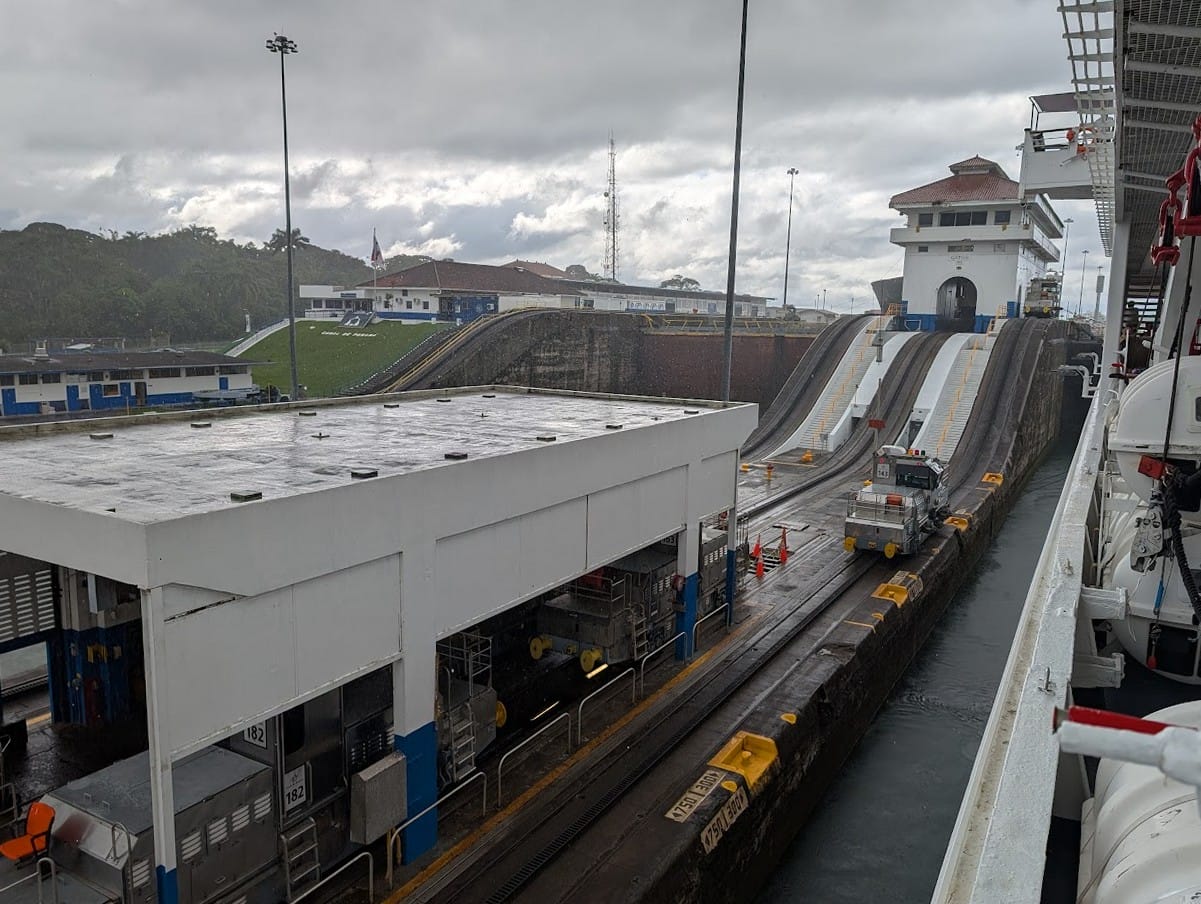
Panama: Panama City
December 17-19, 2024
Nothing more magical than dawn….
Panama is the only place in the world where you can see the sun rise on the Pacific and set on the Atlantic. Panama was the first country outside the United States in which Coca Cola was sold. Panama was the first Latin American country to adopt the U.S. currency as its own.
From the ocean to the jungle, Panama is such a special place. Located on the water, with lots of opportunities for water activities, it also has a beautiful rainforest, tons of biodiversity, ruins, and deep history to experience.
Panama City is much more than the country’s capital. You can pedal in front of a skyline with some of the tallest skyscrapers in Latin America, enjoy the Pacific breeze as you ride along the Bay of Panama, walk among archaeological sites and trails, and see how colonial history and the night come alive in the same place. Panama City is a high-contrast destination where greenery, indigenous peoples, and vibrant city life are waiting for you.
Panama City’s buildings portray it as a modern city, but it holds two other cities. A historic city and the oldest city, Panama Viejo, is the original city center of Panama, founded in 1519 and destroyed by pirates in 1671. The historic area of the city is where the city’s museums and theaters host operas and musical shows.
The other is Casco Antiguo, a walled colonial city full of color, history and flavor. Walking around its streets you’ll find museums, hotels and the best nightlife, with rooftops and restaurants.
Casco Viejo is the historic district, the pretty part, of Panama City. Wander this old town and stumble on wonderful architecture, hidden treasures, and colonial buildings, many of which have been restored. Mixed within the newly restored are old churches and ruined buildings, creating a place which is truly a dynamic mixture of heritage.
Independence Square is the main plaza in Casco Viejo, encircled by museums and the Metropolitan Cathedral Basilica.
Right at the point of the southern tip of Casco Viejo you’ll find Plaza de Francia. Walk the walls near Plaza de Francia (a plaza dedicated to the French who helped build the canal, and a memorial to all those who lost their lives doing so, mainly from illness).
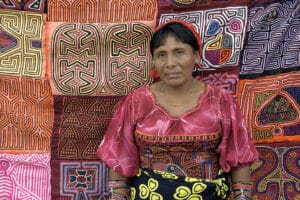
Visit the Mola Museum in the heart of Casco Viejo. A Mola is a traditional blouse worn by women from the indigenous Guna people. It’s known for its colorful and intricate design depicting emblems expressive of Mother Nature. The museum showcases handcrafted works of art and the history of the craft, its importance to the people, and the technique used to create them.
Convent Santo Domingo is a building full of history dating back to the 1570s. It’s the best-preserved church of the ruins of Panama Viejo. The convent was run by nuns before the city was ransacked and the convent set on fire.
Panamanian cuisine is a mix of African, Spanish, and Native American flavors. All the ingredients highlight its diverse population, flavors introduced and combined through the years, creating some truly unique dishes. Panama City is a Creative Gastronomic City. It boasts 4 eateries on the list of Latin America’s 50 Best Restaurants.
Bike along Cinta Costera (Coastal Beltway), a four-plus mile stretch of land which runs along Panama Bay and includes international gardens (such as a Japanese Zen Garden). It’s a nice way to experience Panama Bay. Or bike the Amador Causeway, a roadway that links several small islands joined by rocks excavated during the construction of the Panama Canal. It’s a great place for some fresh air and wonderful views, especially at sunrise or sunset.
The San Francisco Neighborhood is a chic area for shopping, indulging your inner foodie, and buzzing with upbeat entertainment. A fun place.
If you are looking for an area of unspoiled forest, greenery and biodiversity, hike the Metropolitan Nature Park Trails. It’s a beautiful slice of nature that feels so disconnected from the city while being right in the middle. There are a few walking trails, but they all converge at the same point, which is a viewing point right at the top of the park. There’s a lot of wildlife, including sloths. The views of the city from the Metropolitan Park will leave you speechless.
The Chagres, a broad river that flows slowly, is the largest river in Panama. Take a cruise or a stand-up paddleboard up the river for amazing scenery!
Bio Museo is a colorful building, a museum of biodiversity. The museum focuses on the natural history of Panama. You’ll learn about the culture, people and places that make Panama so special, and all about the important role of the Isthmus, a narrow strip of land with sea on either side, forming a link between two larger areas of land, which allowed for the creation of the Panama Canal.
Visit Monkey Island on Gatun Lake, where a huge range of monkeys are present. You can see a range of different species including capuchins, howler monkeys, and even the sloths and toucans, living on the island.
A day trip to the Gamboa Rainforest offers fascinating insights into Panama and its history. The town of Gamboa is a faded colonial gem that has houses and public buildings in various states of repair, while the rainforest is home to a massive range of birds and wildlife, with some lovely walking trails.
Tour The Embera Indian Village where an indigenous tribe live in the Panama rainforest. This day trip from Panama City offers a fascinating perspective on the country before colonization. You will enjoy musical performances, and an introduction to the culture and traditions of the tribe.
Coiba National Park is home to hundreds of marine species that thrive in this ecosystem. Swim alongside manta rays, sharks, dolphins and turtles, in one of the 10 top diving spots in the world.
In the middle of the group of islands of the Bocas del Toro Archipelago you’ll find Dolphin Bay. Bottlenose dolphins live here: you can see them come out to play with the waves that the ship forms.
The building that jumps out at you the most in Panama is El Tornillo, also known as the screw. It is a greenish blue color and all twisted and pointy. This building is unique — so unique that it can’t be used. The floors are slanted and unsafe, so it is just a cool building to look at in Panama.
One of the best things to do in Panama City is to enjoy the sunset. Seeing the sunset over the Panama City skyline is something majestic. When you watch a sunset, you unplug and become present to the moment exactly where you are.
After 34 days in the Caribbean, we make a turnaround and start our 127 days in South America. After a day at sea, The Odyssey will dock in Manta, Ecuador.
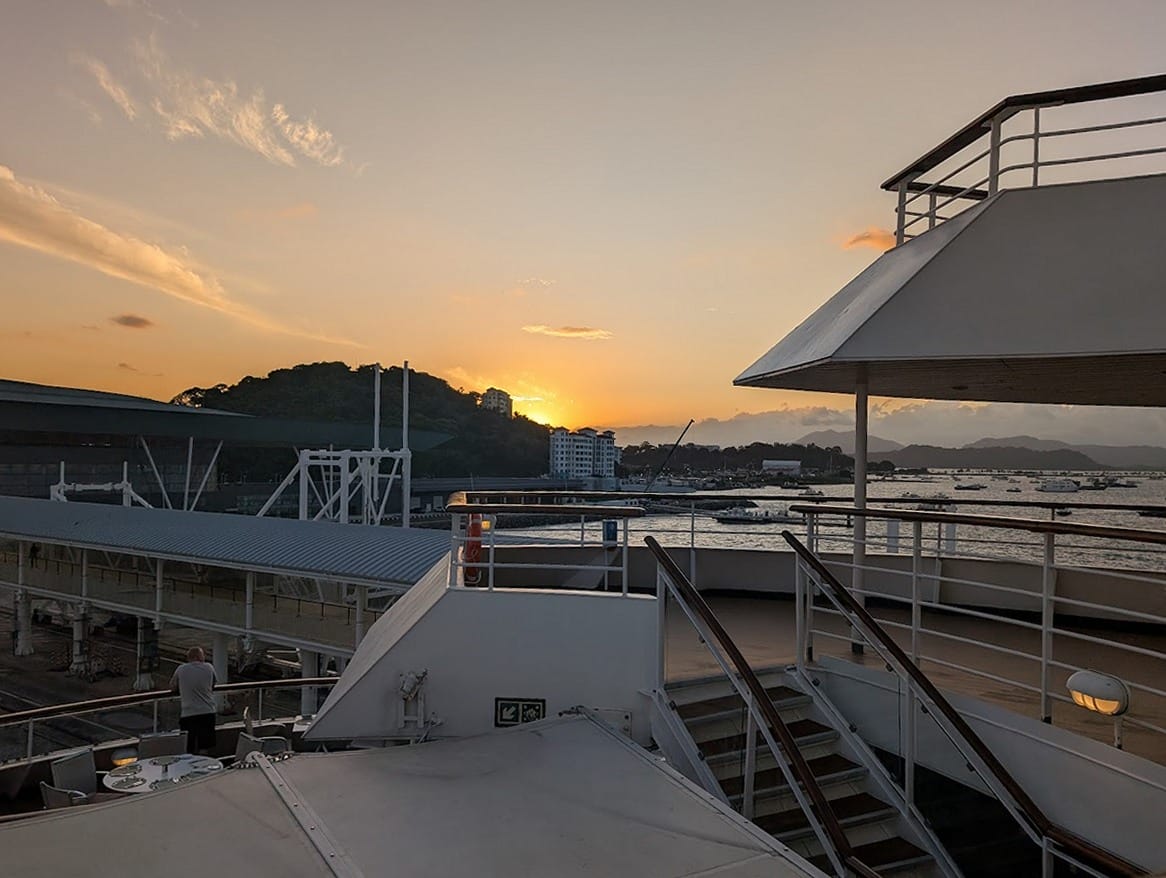
- About the Author
- Latest Posts


These descriptions and photographs bring back a memory for me. We (wife and I) passed through the Canal a number of years ago on a Cruise Ship. One of your photos (the one showing the “Mules” along the canal) looks similar to the location on the ship we were on, while we passed through the canal. We were at eye level with the canal workers at each lock and could hear their conversations. While we passed through the Rain Forest portion of the crossing, rain came steadily but we were underneath the suspended lifeboats and remained dry. This trip was one of our most memorable cruise experiences and is one I would gladly enjoy again.
This is a beautiful description of the passage through the Panama Canal. I felt like I was right along for the journey. Thank you.
I appreciated your commentary and description. It very much reminds me of my trip through the Panama Canal … on a “grey ship.” 😉
My wife and I have been fortunate to have crossed the Panama Canal over a dozen times. As a recovering Civil Engineer, I always find something that I didn’t know before and every time. It provides a look at history and one of the most magnificent engineering feats in the history of mankind (absent the pyramids and the Incan/Mayan/etc. civilizations’ cities).
Here is something that many folks who go through the canal do not know: Does anyone have any tool or other mechanical device that is over 110 years old and still works the way it did the day it came out of the box — with no batteries or other means of moving water except gravity. Well, the Panama Canal, as originally built and still working today, is such a tool. The new locks constructed recently and opened last year do use pumps to move the water in and out of the locks. That is because Lake Gatun is dedicated to the original locks and cannot be expanded.
If you are interested in learning more about this magnificent piece of engineering, please look up David McCullough’s work titled “The Path Between the Seas.” It is a few years old, but he tells a spellbinding story.
Thanks Marti and Randy for the blog. You paint lovely word pictures.
—
We appreciate your feedback. Here’s the link * on Amazon for the book, for anyone who’s interested. -rc